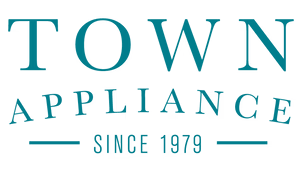If you have a stove, it’s incumbent upon you to take care of it. However, a deep clean of your range isn’t an easy task. It may take days, so you need to have a plan in place. You must figure out what actually needs cleaning and learn a few dos and don’ts because there are things you shouldn’t do when cleaning your kitchen range. Check out our kitchen range cleaning and maintenance checklist below to find out more.
Create a Plan of Action
Before we get into the nitty gritty of cleaning your kitchen range, you need a plan of action and a change of attitude. Make sure you plan the time you want to clean your oven and give yourself an estimate of how long it will take. Adjust this estimate, if necessary, but know it’ll get easier to determine how long a deep clean should take the more you do it. You’ll want to clean some areas of your oven at least once a week, like a stovetop or range exterior. Don’t let those spaghetti stains from two days ago set. Clean it as soon as possible!
You’ll want to clean other areas every three weeks to a month or so. These areas include the sides of your range and the oven’s interior. Practice this cleaning routine every few weeks and enjoy a pristine, beautifully maintained kitchen range.
Step One: Unplug the Oven When Cleaning
You don’t have to unplug the oven for smaller cleaning tasks, like wiping down the stovetop or removing the burner grills and cleaning them. You can even clean your glass window in the oven door without actually unplugging the stove. However, electrical appliances and water-soluble chemicals don’t mix. Even if you’re nowhere near the plug, you can risk electrocuting yourself or burning yourself if you accidentally turn a burner on mid-clean. Therefore, we listed this step first for a reason—people have burned themselves by accident. So, unplugging your oven before you clean it is an essential part of your kitchen cleaning and maintenance checklist.
Step Two: Clean the Stovetop
Your stovetop will look brand new and work effectively for years when you clean it regularly. It may seem daunting, but we promise it isn’t. You can get it done in as little as ten minutes every week.
First, you’ll want to unplug the range. Wait until it cools down completely if it was in use, then collect the knobs, grates, and drip panels—if you have an electric range. Soak them in warm, soapy water in the kitchen sink. While soaking them, use a damp cloth to wipe down the stovetop. However, pay attention. Only soak the knobs for one minute. Otherwise, the markings could come off if you’ve soaked them too long. Wipe them until they’re fully dry and set them aside.
Spray an all-purpose cleaner on the stovetop’s surface and let it sit for a few minutes. Doing so makes wiping off any residue with a nonabrasive sponge easier. You don’t want to use a fine steel wool scrubber, or you’ll scratch your stovetop.
Finally, remove any tough spots on the grates you were soaking. Rinse and dry them, then put them back in place along with the knobs. You should perform this cleaning task once a week.
Step Three: Clean the Inside of the Oven
Most ovens are self-cleaning, so that makes this process easy. Simply turn on the self-cleaning mode and sweep the ashes out after the oven has cooled! That said, you can keep your oven’s interior clean using other methods. Wipe out any residue using a damp cloth after you’ve finished the self-cleaning cycle. If your oven doesn’t self-clean, you can leave a shallow layer of ammonia in the oven and dump it in the morning. Then, wipe off the residue with a damp cloth. Perform this cleaning process once a week.
Step Four: Clean the Range Hood
Unfortunately, not everyone cleans their range hood regularly. However, you need to keep your filter clean to collect grease properly. There’s nothing worse than a stove with grease stains and other debris on it when you have a range hood that can take care of it. Additionally, when you don’t have a clean filter for your range hood, it can’t filter out harmful airborne chemicals in the air. Even worse, your kitchen will become hot and stuffy when cooking. Luckily, it’s relatively easy to clean.
Warning—if you haven’t cleaned your range hood in some time, you might have a mess on your hands when you’re first pulling out the filter. Soak the filter in hot water with baking soda and dish soap. Then, use a nonabrasive brush to scrub it clean. Dry it with a clean cloth before putting it back in the range. You might also want to clean the walls of the range! Doing so ensures the entire hood will work like the first day you got it. Use an all-purpose cleaner and a dishcloth, and wipe down the hood walls as often as possible.
Step Five: Use Vinegar on the Doors and Glass
Your oven door’s window should be crystal clear. At least, this is the ideal situation. In practice, your oven glass might be far different. Consider this, though. How can you check on your cake, cookies, or roast when you can’t see it? It’s a relatively easy fix. Wipe down the outside and inside of your door with warm soapy water, and keep the door open to let it fully dry. If your oven door is streaky, spray a one-to-one mix of water and distilled vinegar. Finally, wipe it down with a clean cloth. It’ll look brand new!
Step Six: Wipe Down Your Ranges Exterior
The exterior of the range is also important, as it’s one of the first things you see when you walk into your kitchen. Don’t forget to wipe down the sides of your stove. If you don’t, it’ll build up with many things, including grease spots, dust, and debris. You could even expect cobwebs between your range and another appliance if you aren’t careful. All these things impact the cleanliness of your home, so don’t neglect the exterior.
Step Seven: Don’t Forget To Check Your Burners
At this point, you should have soaked your burners, but you must also check them for any deformities and debris. If you notice that any of the spots on your burners glow brighter than the rest, you need to get a replacement or at least a repair. It’s usually a minor issue, but there’s a possibility that it’ll result in heavy damage to your appliance. As such, you should cease using your oven until you can replace your burner.
We’ve talked a lot about ranges here, so where do you go if you need a replacement? We’ve got you covered here at Town Appliance. We have kitchen stoves for sale, built-in microwaves, professional BBQ grills, and any other appliance you might need. We’ll make sure you leave our site with a product that satisfies you.







